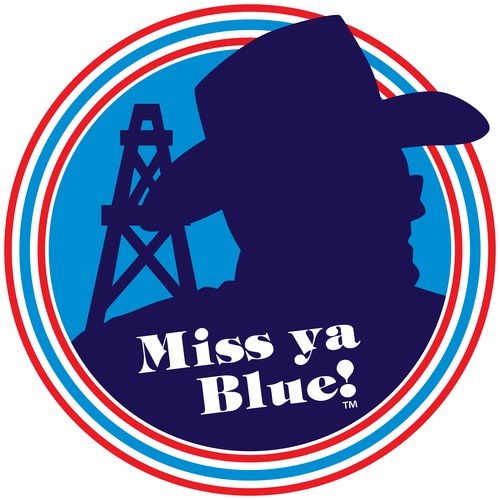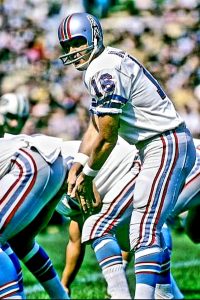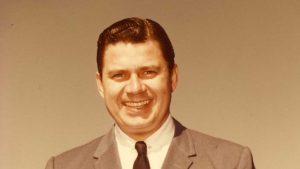The 1966 Season, Part 2

“If You Can’t Beat ‘Em, Join ‘Em”
PREVIOUSLY – The 1966 Season, Part 1: “The Cat’s Out of the Bag, Bones is Gone, and Wally’s Back”
The year of 1965 saw the premier of the Harris County Domed Stadium, the world’s first indoor stadium that would later be known as The Astrodome and affectionately billed as The Eighth Wonder of the World.
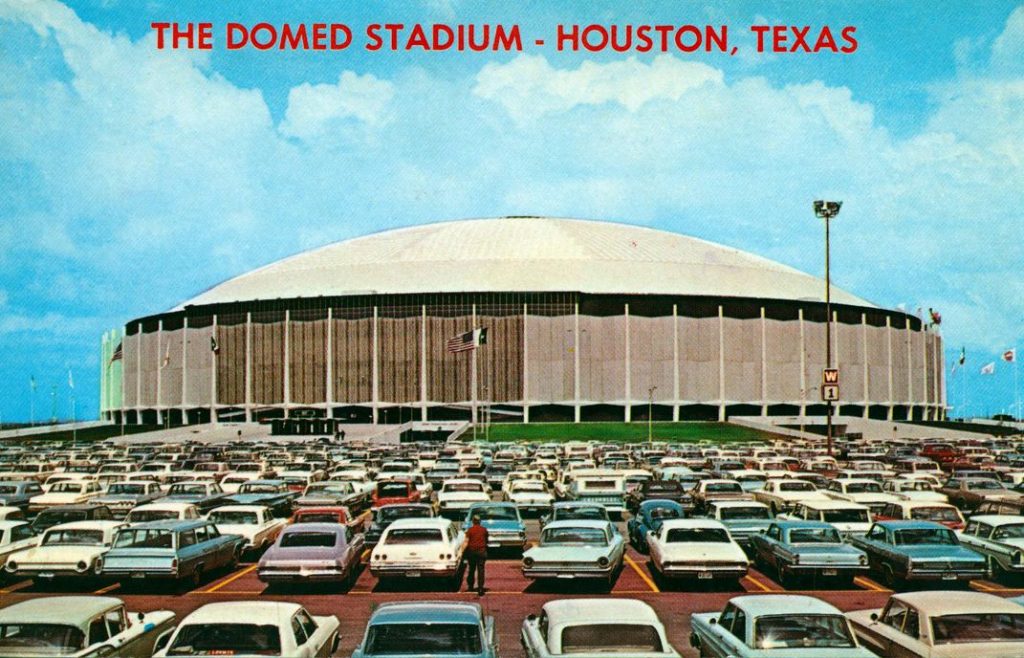
As might be expected, a feud between Houston Oilers owner Bud Adams and the Houston Sports Authority left the Oilers outside its air-conditioned walls and suffering through the heat in open-air Rice Stadium.
Fans were furious, and attendance dropped from 52,000 for the opening game of the 1965 season to 24,000 at the last game.
If only for marketing purposes, the AFL had wanted the Oilers in the Dome, and his fellow franchise owners were still angry at Adams for missing such a great opportunity to boost the league’s brand.
Eager to seize the moment, NFL Commissioner Pete Rozelle explored the possibility of placing an NFL expansion franchise in Houston to play in the Dome.
In response, Adams yet again threatened to move the team if attendance did not improve.
In 1966, competition to sign players reached a boiling point between the two rival leagues, and again, the NFL signed more of them, but for players in both leagues, their salary sizes were shocking to the 1960s public.
With his hand forced by these astronomical sums, Adams promised the people of Houston that he would sign the Oilers picks and that the team would turn around quickly.
The Oilers made many picks in the 1966 draft and netted a fairly strong class.
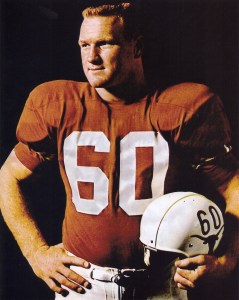
However, not having yet hired Don Klosterman as general manager, the front office remained in shambles and were outclassed in finding good players and signing them to contracts.
In the first round, Houston selected Tommy Nobis, a star linebacker from the University of Texas.
Nobis had also been the first pick in the NFL Draft for the new Atlanta Falcons expansion team.
Adams wanted to personally handle Nobis’ negotiations and offered him $650,000, knowing that Nobis, a native of College Station, Texas, would want to stay close to home.
Even the crew of the Gemini 7 space mission sent a message from their spacecraft for Nobis to stay in Texas.
Instead, Nobis signed with the Falcons.
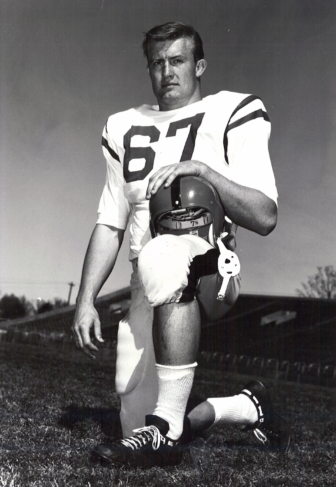
He played 10 seasons in the NFL and two seasons for the Atlanta Braves of Major League Baseball, logging only 14 games in the 1967 and 1972 seasons, but still establishing himself as a dual-sport professional athlete.
Nobis made five Pro Bowls, was a first-team All-Pro in 1967, and was named to the Pro Football Hall of Fame’s All-1960s Team.
In the second round, the Oilers drafted Stan Hindman, a defensive end from Ole Miss, but Hindman signed with the NFL’s San Francisco 49ers, where he played for seven seasons.
Still wanting to make a splash with a Texas-centric pick, Adams decided he would go after All-American Halfback Donny Anderson of Texas Tech, whom the Oilers had selected in the 1965 redshirt draft.
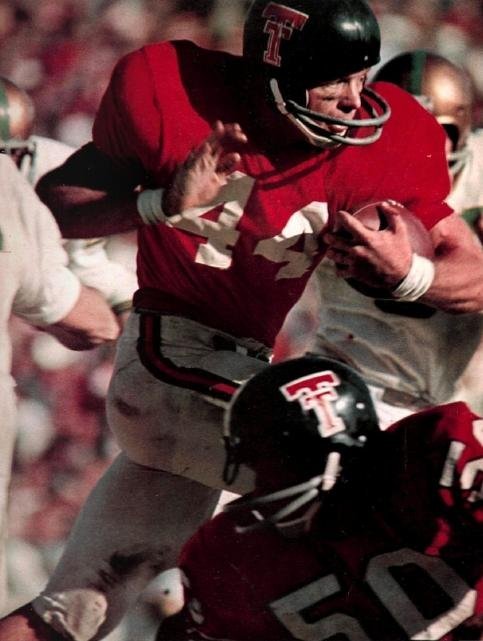
Adams flew Anderson to Houston and offered him a contract of $887,000 that included a home in River Oaks, a huge swimming pool, a car, and “even a job and car for Donny’s father.”
Instead, Anderson signed for $600,000 with the NFL’s Green Bay Packers, causing Adams to proclaim that his “confidence in American youth is just about shattered.”
Apparently, several Green Bay players had contacted Anderson, urging him to sign with the Packers, while several Oiler players had advised him against playing for Houston.
The Oilers’ 1966 Draft:
- Tommy Nobis • LB • Texas • Signed with NFL’s Falcons
- Stan Hindman • DE • Ole Miss • Signed with NFL’s 49ers
- George Rice • DT • LSU • Played four seasons with Oilers
- George Allen • T • West Texas A&M • Played one season with Oilers
- Hoyle Granger • RB • Mississippi State • Played six seasons for Oilers & seven seasons in NFL
- Dave Long • DE • Iowa • Signed with NFL’s Cardinals • played 7 seasons
- Pep Menefee • WR • New Mexico State • Signed with NFL’s Giants
- Dan Bland • HB • Mississippi State • Never played
- Dick Suffel • DB • Southwest Texas State • Never played
- Wilber Aylor • DT • Southwest Texas State • Never played
- Monte Ledbetter • WR • Northwestern State • Played five games for Houston, then NFL’s Bills for three seasons
- Harry Day • DE • Memphis State • Never played
- Fred Zimmerman • LB • Toledo • Never played
- Dave Lince • TE • North Dakota • Signed with NFL’s Eagles • played two seasons
- Tom Dillard • T • Austin Peay • Never played
- Steve Smith • T • Michigan • Signed with NFL’s Steelers • played eight seasons
- Lyle Loebach • T • Simpson • Never Played
- Ed Buzzell • QB • Ottawa • Never played
- Frank Fuller • DT • Drake • Never played
- Dave Odegaard • C • Bemidji State • Never played
Of their 20 picks, the Oilers managed to sign just four that would play for the franchise.
The inept and amateur front office was killing the team.
Klostermann was exactly what the Oilers needed to change the trajectory from the death spiral of drowning to at least treading water.
Once installed as the GM, he obtained the rights to Ronald Caveness, a linebacker who had been drafted in 1965 by both the NFL’s Los Angeles Rams and the AFL’s Kansas City Chiefs, but who had signed with the Chiefs.
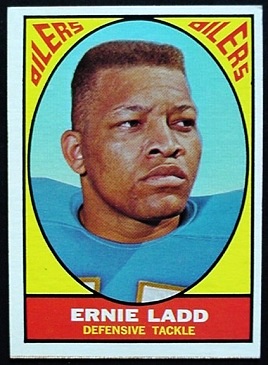
He traded for the San Diego Chargers’ Ernie Ladd, giving up tight end Willie Frazier and defensive back Pete Jaquess.
Klosterman convinced former Oiler quarterback Jacky Lee to return to Houston from Denver, renewed the contract of stalwart receiver Bill Groman, and signed several other good free agents.
Meanwhile, Head Coach Wally Lemm rehired Walt Schlinkman as an assistant coach and added Hugh Davore, Wayne Robinson, and Joe Childress to the staff.
Davore brought with him a strong coaching resume, including stints with the NFL’s Packers and Philadelphia Eagles, as well as Notre Dame.
Robinson had played for the Eagles in the 1950s and coached in the Canadian Football League and at the University of Iowa.
Childress had been a running back in the NFL with the St. Louis Cardinals under Lemm and came with Lemm to Houston to begin his coaching career.
Although the Oilers had upgraded their coaching and front office, Adams was still the owner, which meant nothing would be stable for too long.
On April 8, 1966, at an AFL league meeting, Adams was standing near Jets owner Sonny Werblin when he saw Houston Post reporter Jack Gallagher and said, “Hello, skinhead.”
Gallagher told his accompanying photographer to take two pictures, one with Adams in it and one without.
Adams reportedly said, “Go ahead, sonny boy, get your picture,” and turned away from them.
Sonny Werblin thought Adams had spoken to him and asked Adams what he had said.
Adams replied that he hadn’t addressed Werblin but rather that “Irish son of a bitch over there.”
Gallagher stepped up to Adams and said, “If you are going to do something, go ahead and do it.”
To quote John Pirkle in Oiler Blues, “It was over quickly. Adams landed three punches, while Jack threw a Buddy Ryan-like jab at him.”
New AFL Commissioner and former Oakland Raiders Head Coach Al Davis and Buffalo Bills owner Ralph Wilson pulled Adams off of Gallagher as Adams tried to “kick in Jack’s face.”
Meanwhile, although the Adams/Gallagher blood feud raged on, another blood feud was about to take a turn in a different direction.
The AFL-NFL rivalry and race to sign draft picks had taken a toll on both leagues but was hurting the AFL more, because its owners had to far outspend the NFL to attract college players.
To ignite the league, AFL owners inserted Davis as commissioner, thinking they could somehow control him.
Davis immediately threatened to sign the NFL’s best players, especially its star quarterbacks, and, relishing a chance to tangle directly with Rozelle, he wasted no time in signing Roman Gabriel from the Rams.
Meanwhile, the Oilers signed 49ers quarterback John Brodie and even the Bears’ Mike Ditka, the tight end they had drafted but couldn’t sign a few years before.
In a grudge that lasted many years into the future, Davis and Rozelle came to be true enemies regarding their two leagues, but neither knew that owners from both leagues had been secretly meeting to discuss a merger agreement.
First Wilson of the Bills and Carroll Rosenbloom of the Rams connected to discuss the merger, then Lamar Hunt of the Chiefs and Tex Schramm of the Dallas Cowboys met in a parked car at the Dallas Airport.
On June 8, 1966, the two leagues announced a merger agreement.
Both Rozelle and Davis felt betrayed.
Unfortunately for AFL franchises, as part of the agreement, the free agent contract war was reversed, and recently signed NFL players reverted back to their original teams.
Rozelle was picked to continue as commissioner of the merged league structure.

Now out of a job, Davis was offered part ownership in the Raiders and became the team’s general manager.
The merger would create a 26-team league and necessitated a realignment of divisions.
The Baltimore Colts, Cleveland Browns, and Pittsburgh Steelers moved to the new American Football Conference to join the former AFL franchises, and a common schedule would begin during the 1970 season.
Under the moniker provided by Hunt, the bolstered league would host its first championship game, known as the Super Bowl, in 1967 at the end of the 1966 regular-season campaign.
UP NEXT – The 1966 Season, Part 3
Ed Wetterman is a native Houstonian and lifelong Oiler fan/historian. He is a teacher, genealogist, game creator, and writer who lived and died on Sundays with the Oilers. Ed has created many games such as “East Texas University: Degrees of Horror” and written short stories such as “HellFighter,” published by Pinnacle Entertainment Group. Football has always been one of his greatest passions. He experienced the highs and the lows of being an Oiler fan, and like many others, he was crushed when the Oilers left Houston. Writing for Miss Ya Blue! gives him an outlet for his Columbia Blue love.
#houston #oilers #htown #houstontx #houstonoilers #nfl #astrodome #sports #star #history #football #luvyablue #missyablue #texas #houstonblogger #throwback
